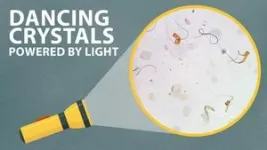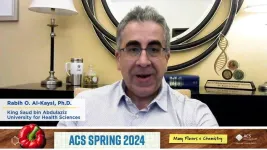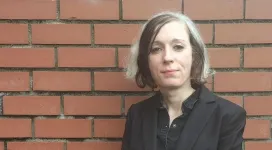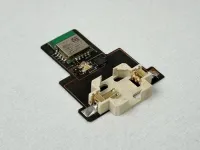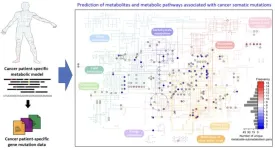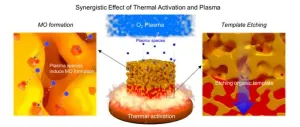The researchers will present their results today at the spring meeting of the American Chemical Society (ACS). ACS Spring 2024 is a hybrid meeting being held virtually and in person March 17-21; it features nearly 12,000 presentations on a range of science topics.
Antonio Capezza, who will present the research at the meeting, says that in Europe, regulations discourage the use of certain petroleum-based plastics in disposable goods. However, there aren’t clear guidelines or regulations to ban these plastics in diapers, sanitary pads and other disposable sanitary items, he notes, because a good replacement hasn’t been available. “But we’re hoping to change that with our protein-based materials.”
Of course, washable diapers avoid the plastics issue altogether, but he says that few caregivers want to use them. He is aiming to provide a different type of sustainable, non-polluting solution to people who want to continue using disposable sanitary products. “The acceptance rate will be much higher than if you come to a customer and say, ‘Okay, now you have to wash your diapers,’” explains Capezza, a researcher in the polymeric materials division at KTH Royal Institute of Technology in Sweden.
Ironically, the project had its origins in a demonstration designed to teach students what can go wrong in the lab. Capezza was showing them how to make bioplastic filaments using proteins. To mimic the impact of unwanted humidity, he added wet cotton, which caused the mixture to foam. Once the product dried, he realized, the material had become super porous, meaning it could sop up liquid like a sponge.
“So it was sort of an accident, but a good one, because that led us to an entirely new line of research,” he says. Capezza is collaborating with researchers at KTH, the Swedish University of Agricultural Sciences, and other institutions, including Simón Bolívar University in Venezuela, the University of Tokyo in Japan and the University of Seville in Spain.
Some cotton-based alternatives to plastic sanitary products are already on the market, but they rely on virgin cotton and may need bleaching or other chemical treatment for their production. Looking for a more sustainable material source, Capezza’s team identified proteins and other natural molecules left over from food and agricultural production that might otherwise be landfilled or incinerated: for instance, zein from corn, gluten from wheat and natural antioxidant extracts.
The researchers mixed the proteins together in different proportions and added water and bicarbonates, such as baking soda, as foaming agents; the sweetener glycerol as a plasticizer; and natural extracts as preservatives.
The team then used equipment and processing techniques from the plastics industry, including extrusion, to make various components commonly found in pads and diapers. Similar to a pasta maker, the extruder enabled the team to produce filaments and flat sheets while at the same time allowing them to foam the materials. With these techniques, the researchers produced a flat “nonwoven” layer that remained dry to the touch while allowing liquid to rapidly pass through; a fluffy porous material with superabsorbent properties that captured liquid; and waterproof films to protect outer garments.
As a proof of concept, the researchers assembled these components to make protein-based absorbent prototypes that resembled disposable sanitary products. Once exposed to water or soil, the materials completely biodegraded in a few weeks. Because of the materials’ protein origin, this degradation released carbon, nitrogen, phosphorus, amino acids and other compounds that nature can reuse as nutrients.
With further development, Capezza says, this could lead to single-use sanitary products that can be flushed. Alternatively, after use, these products (or any waste produced at the manufacturing stage) could be composted to fertilize crops, such as corn and wheat, which would in turn provide the starting materials to make new sanitary products. “So it’s a fully circular design,” Capezza adds. The researchers have already shown that plants grow longer leaves and roots when exposed to this compost. “And our tests have shown that because it's protein based, there's no risk whatsoever that these products will pollute the soil with microplastics or other unwanted chemicals when they break down.”
Protein-based sanitary products would be about 10 to 20% more expensive than traditional plastic diapers and pads, Capezza estimates. The performance of protein sanitary pads is similar to that of conventional pads. On the other hand, protein diapers aren’t as absorbent as their plastic counterparts. That means protein diapers would either need to be thicker, or their formulation would need to be tweaked to improve absorption. To boost liquid uptake and mechanical strength, the researchers are now exploring the addition of lignocellulose, a blend of lignin and cellulose that’s found in plants. This material is a low-value byproduct of the farming and forestry sectors. Results to date show its addition is bringing performance close to that of conventional diapers.
The team is now preparing for pilot studies to test the feasibility of scaling up production. Additional evaluations, including human skin irritation tests, will need to be done before any of these products can go on the market, Capezza says.
The research was funded by the Bo Rydin Foundation and Formas, a Swedish government research council for sustainable development. The team has filed a patent application on the technology and process.
Visit the ACS Spring 2024 program to learn more about this presentation, “Protein blends enable the production of multipurpose and eco-friendly porous structures in disposable sanitary items,” and more scientific presentations.
###
The American Chemical Society (ACS) is a nonprofit organization chartered by the U.S. Congress. ACS’ mission is to advance the broader chemistry enterprise and its practitioners for the benefit of Earth and all its people. The Society is a global leader in promoting excellence in science education and providing access to chemistry-related information and research through its multiple research solutions, peer-reviewed journals, scientific conferences, eBooks and weekly news periodical Chemical & Engineering News. ACS journals are among the most cited, most trusted and most read within the scientific literature; however, ACS itself does not conduct chemical research. As a leader in scientific information solutions, its CAS division partners with global innovators to accelerate breakthroughs by curating, connecting and analyzing the world’s scientific knowledge. ACS’ main offices are in Washington, D.C., and Columbus, Ohio.
To automatically receive news releases from the American Chemical Society, contact newsroom@acs.org.
Note to journalists: Please report that this research was presented at a meeting of the American Chemical Society. ACS does not conduct research, but publishes and publicizes peer-reviewed scientific studies.
Follow us: X, formerly Twitter | Facebook | LinkedIn | Instagram
Title
Protein blends enable the production of multipurpose and eco-friendly porous structures in disposable sanitary items
Abstract
The sanitary industry producing several single-use consumer products containing non-biodegradable petroleum-based plastics negatively impacts the environment. Single-use sanitary products such as diapers and sanitary pads have become the main environmental concern in household waste and are considered the main plastic pollutant where waste management policies are weak. Here, we have obtained protein-based porous structures that can be thermally processed using common plastic processing techniques, i.e., extrusion and compression molding. The adequate viscoelastic properties of the protein blend made it possible to produce porous filaments, pellets, permeable membranes and hot-pressed flexible shapes. The processing feasibility in multiple shapes is attributed to the blend of zein (low viscosity thermoformable protein) with gluten (high molecular weight protein). In contrast, the proteins could not be processed into these shapes when used separately. The materials were assembled into a first all-in-one protein-based sanitary pad. The hydrolytic degradation in different buffer conditions and composting showed full biodegradability in less than 7 weeks, which allows for an initial step into making single-use sanitary products that can be flushed. The study included a cost assessment of the materials compared with traditional synthetic commercial materials and shows that all the recipes have a competitive price, with the raw materials being industrially available for future upscaling. Despite the focus of the work being absorbent pads as a proof-of-concept, the possibilities of forming degradable permeable membranes encapsulating an absorbent core can be extrapolated to other disposable products used in the sanitary and hygiene field. Future work includes using lignocellulosic biomass to increase the liquid uptake capacity and mechanical strength of the herein-produced protein blend products.
END


